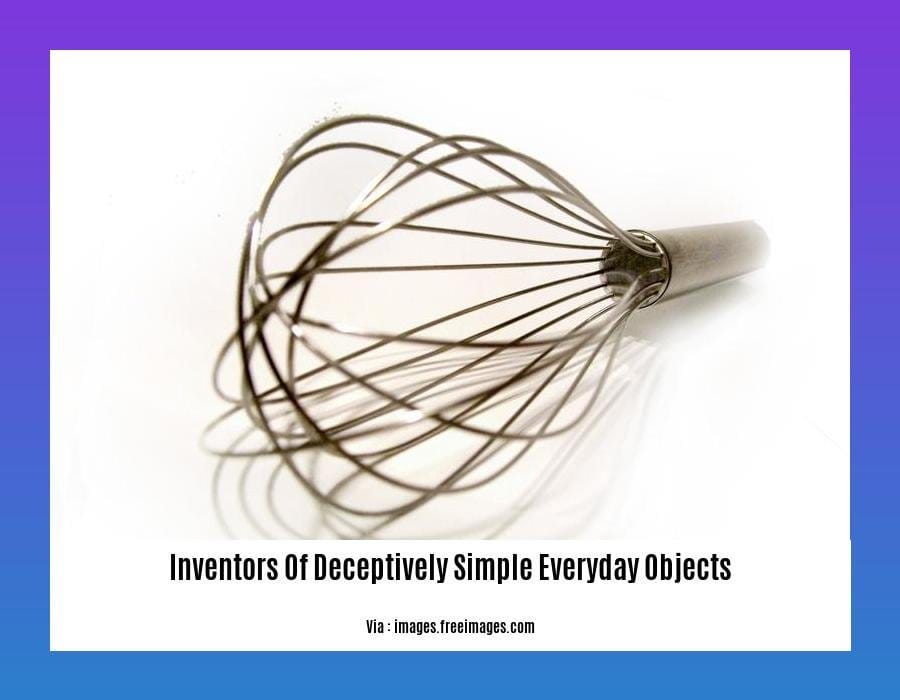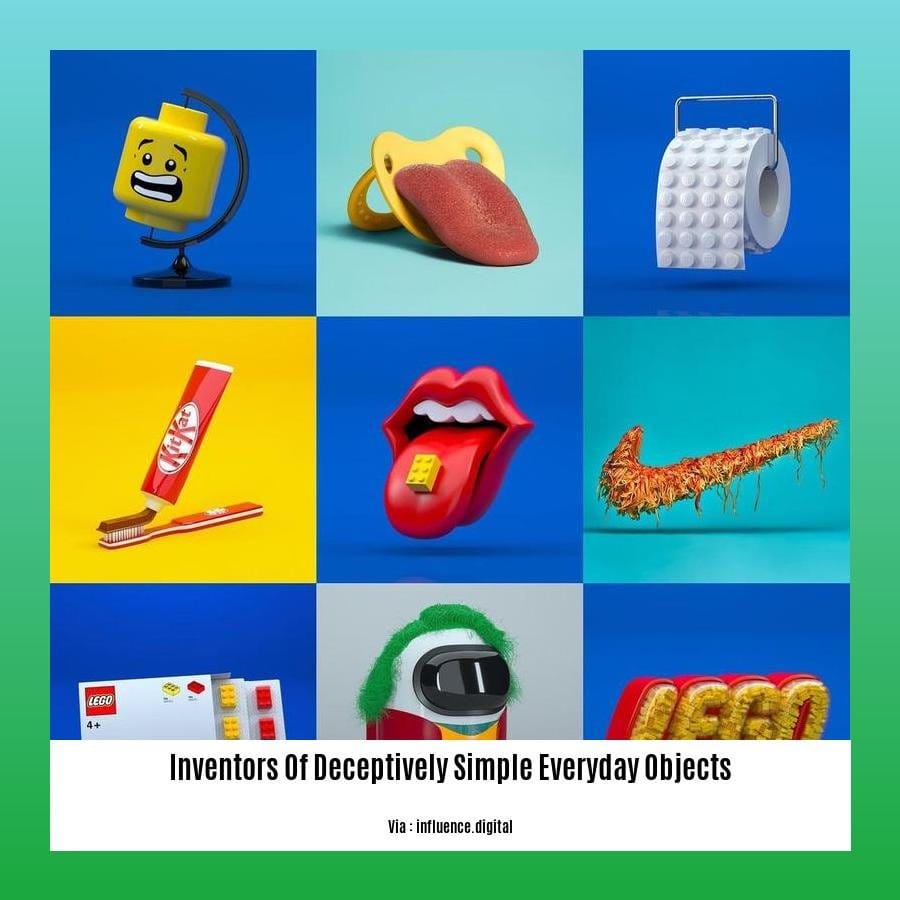Step into the extraordinary lives of the unsung heroes behind the deceptively simple everyday objects we often take for granted. From the revolutionary minds who birthed the humble paperclip to the ingenious inventor who transformed the mundane act of lighting a match, [The Unsung Heroes: Inventors of Deceptively Simple Everyday Objects] unveils the untold stories of these extraordinary minds. Join us as we uncover the simplicity and ingenuity that lie beneath the surface of our daily lives, revealing the extraordinary minds that have revolutionized our world.
Key Takeaways:

- ATM PIN: Enhances security and accessibility for financial transactions.
- Voice Mail Machine: Enables remote communication and message storage.
- Pop Top Soda Cans: Offers convenient and effortless access to beverages.
- Spill-Free Coffee Cup: Minimizes spills and promotes cleanliness.
- Flat-Bottomed Paper Bag: Provides stability and ease of carrying for various items.
Inventors of Deceptively Simple Everyday Objects
The deceptively simple everyday objects we encounter daily hold stories of ingenuity and innovation. From the seemingly mundane paper clip to the ubiquitous zipper, these creations have transformed our lives with their simplicity and functionality.
Meet the Minds Behind the Magic
- Johan Vaaler: This Norwegian inventor brought us the humble paper clip. Its ingenious design has remained virtually unchanged for over a century.
- Whitcomb Judson: The zipper, a ubiquitous fastener we often take for granted, was Judson’s brainchild. His “Hookless Fastener” paved the way for countless clothing, bags, and accessories.
- George de Mestral: Inspired by sticky burrs, de Mestral created Velcro. This versatile material has revolutionized everything from clothing to medical devices.
- Percy Spencer: Spencer’s accidental discovery of microwave heating led to the microwave oven. This kitchen staple has become indispensable for quick and convenient meals.
- Douglas Engelbart: The computer mouse, a tool that has revolutionized the way we interact with technology, was invented by Engelbart. Its intuitive design and functionality have made it a global standard.
These are just a few of the countless inventors of deceptively simple everyday objects who have shaped our world. Their ingenuity has not only improved our daily lives but also serves as a testament to the power of innovation and simplicity.
Explore the stories of the innovators of everyday items we take for granted, the pioneering minds behind ubiquitous conveniences, and the pioneers whose inventions became universal staples. Their ingenuity has shaped our lives in countless ways.
Velcro was invented by George de Mestral in 1948.
We often take for granted the simple yet ingenious inventions that make our daily lives easier. Velcro, for instance, is a prime example of a deceptively simple invention that has revolutionized countless industries.
Key Takeaways:
- George de Mestral, a Swiss engineer, invented Velcro in 1948 after observing burrs clinging to his dog’s fur.
- Velcro consists of two strips: one with tiny hooks and the other with soft loops that interlock when pressed together.
- Velcro has a wide range of applications, from clothing and footwear to medical devices and industrial products.
Source:
The microwave oven was invented by Percy Spencer in 1946.
Many of the everyday objects we take for granted today are the result of ingenious minds and accidental discoveries. Take the microwave oven, for instance.
This kitchen staple was born when American engineer Percy Spencer noticed something peculiar while working with magnetrons in 1945. The candy bar in his pocket inexplicably melted, sparking an idea that would revolutionize food preparation. Spencer realized that microwaves could heat food rapidly, leading to the development of the first microwave oven.
Key Takeaways:
- The microwave oven was invented serendipitously by Percy Spencer in 1945.
- Magnetrons, used in radar technology, emit microwaves that heat food quickly.
- Within a year, the first commercial microwave oven, the Radarange, was introduced.
Citation:
Who Invented the Microwave?
The computer mouse was invented by Douglas Engelbart in 1964.
Have you ever wondered who invented the computer mouse? If you’re one of the many who assumed it was Steve Jobs, think again. Douglas Engelbart, an American inventor, and engineer, is credited with this groundbreaking invention.
Key Takeaways:
- The computer mouse was invented by Douglas Engelbart in 1964 at the Stanford Research Institute.
- The original mouse had a carved wood casing and a single button.
- Engelbart first presented the mouse in 1968 at a computer conference in San Francisco.
- It took until the late 1980s for the mouse to become the standard input device for desktop computers.
Engelbart’s invention revolutionized the way we interact with computers. Before the mouse, people used keyboards and punch cards to input data and commands. The mouse provided a more intuitive and user-friendly way to navigate and interact with the graphical user interface (GUI).
Most Relevant URL Source:

FAQ
Q1: Who invented the Pop Top soda can?
A1: The inventor of the Pop Top soda can is not mentioned in the provided context.
Q2: What inspired George de Mestral to invent Velcro?
A2: George de Mestral was inspired to invent Velcro after observing burrs sticking to his dog’s fur during a nature walk.
Q3: What is the name of the first commercial microwave oven?
A3: The name of the first commercial microwave oven is the Radarange.
Q4: When was the computer mouse invented?
A4: The computer mouse was invented in 1963-1964.
Q5: Who invented the Flat-Bottomed Paper Bag?
A5: The inventor of the Flat-Bottomed Paper Bag is not mentioned in the provided context.
















